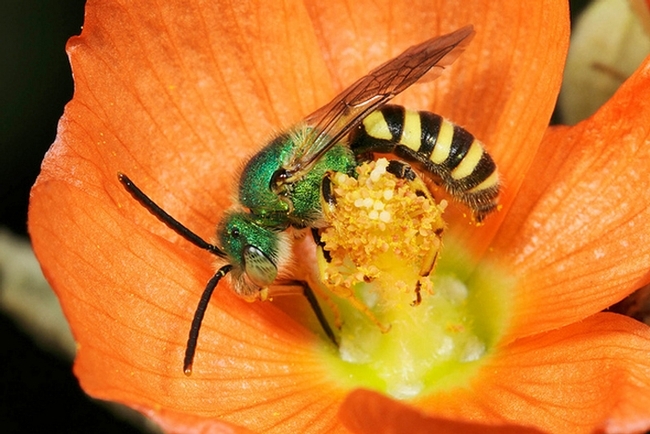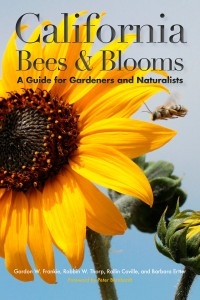Author: Linda Bray, UC Master Gardener, Contra Costa County
**********************************
Editor's Note: UC Master Gardener Program receives a lot of questions about gardening and bees and how to attract and protect them in our gardens. Below is a recent report on the status of native bees in Contra Costa County. While the report deals primarily with agriculture in East Contra Costa County, the principles will also apply to your garden (e.g., click).
**********************************
I attended the meeting of the Contra Costa County Fish and Wildlife Committee yesterday (July 20, 2016) and was especially interested to learn about the progress of UC Berkeley's native bee research and how it has affected agriculture in our area.
First on the agenda was Dr. Gordon Franke of UC Berkeley who presented the progress made on the project, Bees In Brentwood. Dr. Franke and his research group have been studying native bees since 1987 and the research has now extended to farms in both Contra Costa County and Ventura County. Dr. Franke began his presentation by stating that there are 4.000 species of native bees throughout North America but California is home to 1600 species which makes it the perfect habitat to study these busy pollinators.

pix: UCANR
Farmer Al Corchesne of Frog Hollow Farms in Brentwood was open to having Dr. Franke's research teams set up a demonstration garden on a small plot among his hundred acres. The diverse plants used in the garden were native bee-drawing ornamentals. Since then, seven other farmers have agreed to be part of the research. Ultimately, the native bees do not require a monetary investment if they are found on the farms and in time, may be the only agents of pollination if colony collapse continues. There are eight demonstration garden plots; four are treatment and four are control. Some farms are organic and some are conventional. The monitoring of native bee populations has been ongoing since 2010. To date, the conventional farms near Marsh Creek have the highest numbers of native bees. UC Berkeley teams conduct twice-weekly visits during the growing season and monitor the numbers and species. Data is continually analyzed for key outcomes.

Dr. Franke encouraged committee members to visit helpabee.org to read the latest outcomes of the native bee research. His book, CALIFORNIA BEES AND BLOOMS, published in 2012, is a guidebook to California's 1600 species of wild bees and gives information about what to plant to attract them to our gardens. Education is the key to making the public aware of identification of native bees and their susceptibility to pesticides. There is continuing proof that neonicotinoids can adversely affect not only native bees but many species of birds as well. As new chemicals are formulated for use in our gardens, research is key to short and long term effects on our environment. Certainly, the effects on our native bee species is critical to our long-term food supply.
UC Master Gardener Program of Contra Costa County (LMB)
Note: The UC Master Gardeners Program of Contra Costa's Help Desk is available year-round to answer your gardening questions. Except for a few holidays, we're open every week, Monday through Thursday for walk-ins from 9:00 am to Noon at 75 Santa Barbara Road, 2d Floor, Pleasant Hill, CA 94523. We can also be reached via telephone: (925) 646-6586, email: ccmg@ucanr.edu, or on the web at http://ccmg.ucanr.edu/Ask_Us/ MGCC Blogs can be found at http://ccmg.ucanr.edu/HortCoCo/ You can also subscribe to the Blog (//ucanr.edu/blogs/CCMGBlog/).